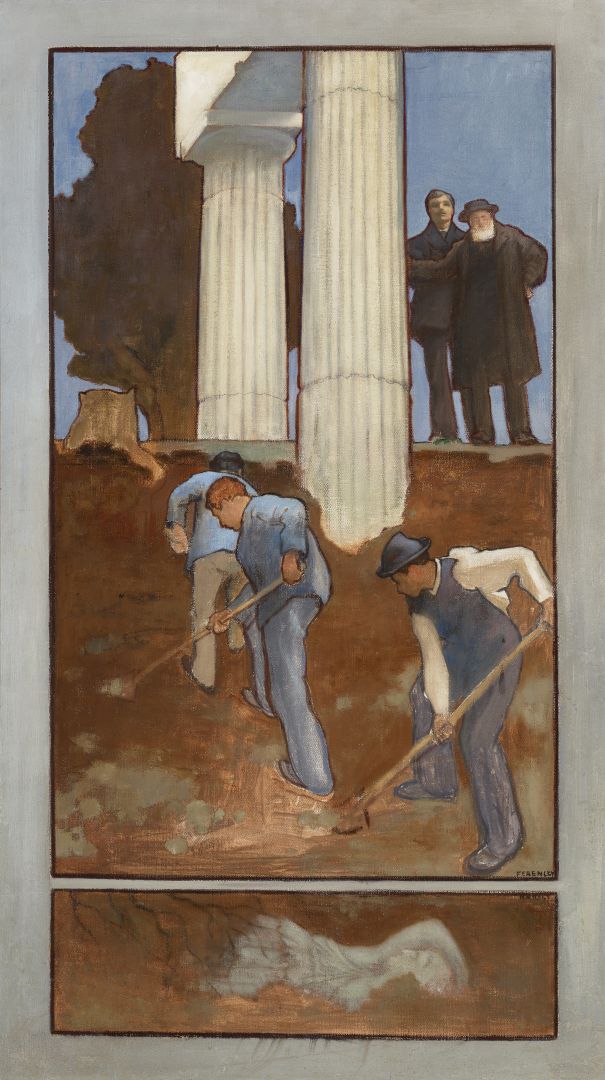Paradise in Heaven and on Earth - 3. view
Archaeology
FERENCZY Károly
Vienna, 1862 – Budapest, 1917
Archaeology, 1896
Some art historians have suggested that this work, conceived in the Secessionist style, was probably a draft for a fresco, an idea supported by the foreshortened perspective of the scene when viewed from below. Nobody knows where the fresco was destined, but judging from the theme, Ferenczy may have designed it for a new museum.
The work is intended to represent “archaeology”, but it is far removed from the allegorical, historicising type of concept that was customary at the time. In the picture, which is divided into two, the artist condenses the different regions of time – past, present and future – into a single plane. As a result, the viewer notices the treasures buried in the ground, which will soon break surface, before observing the figures in the picture. In the lower section of the painting, forming a kind of predella, can be seen the Greek sculpted torso, which explains the main scene. Antique statues frequently occur in other works by Ferenczy, and can be interpreted as symbols of art and beauty. Watching keenly from the edge of the trench, the archaeologists – typical figures at excavations of the time – bear the recognisable features of the artist himself and his father.
